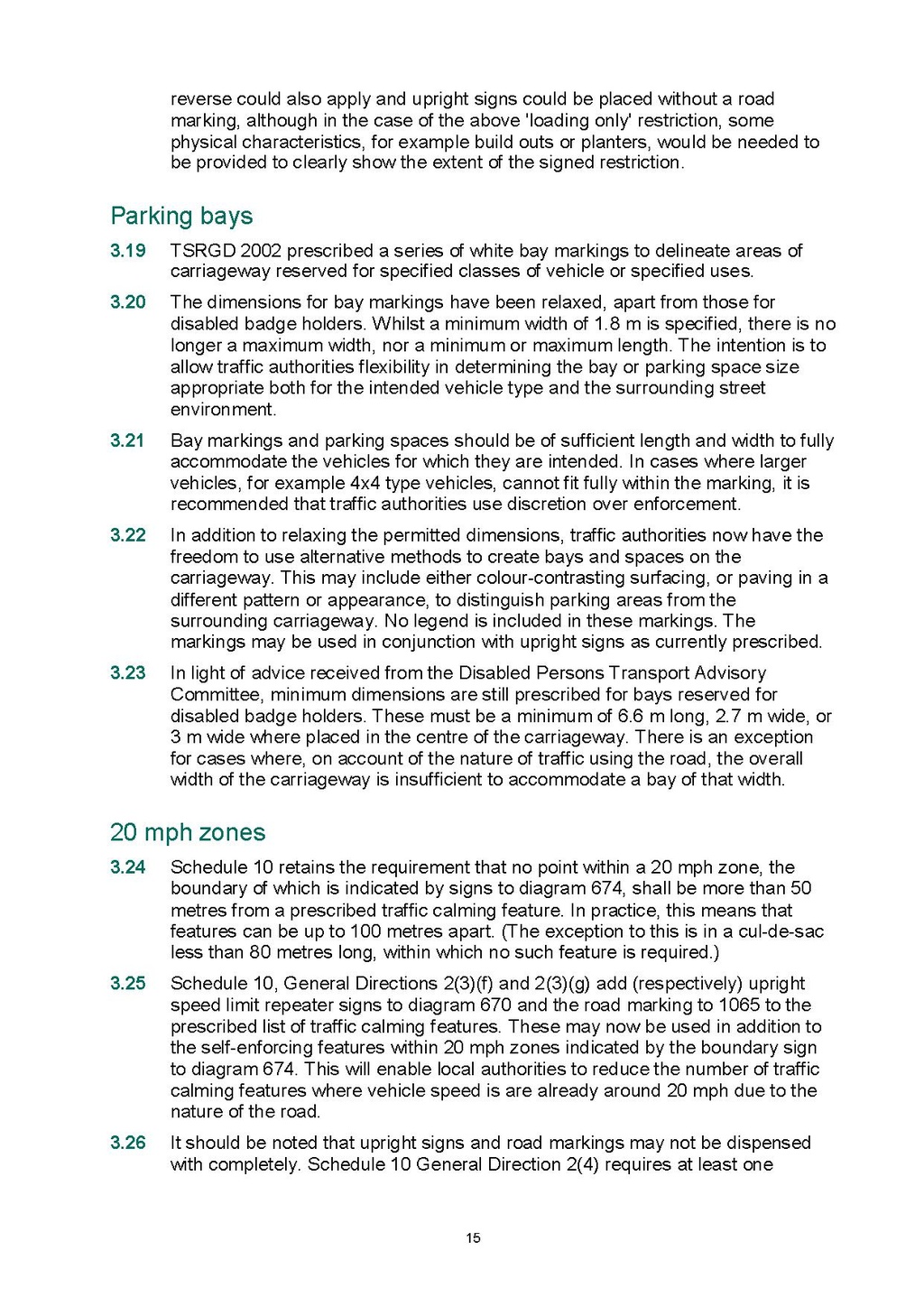This page has been validated.
reverse could also apply and upright signs could be placed without a road marking, although in the case of the above 'loading only' restriction, some physical characteristics, for example build outs or planters, would be needed to be provided to clearly show the extent of the signed restriction.
Parking bays
3.19
TSRGD 2002 prescribed a series of white bay markings to delineate areas of carriageway reserved for specified classes of vehicle or specified uses.
3.20
The dimensions for bay markings have been relaxed, apart from those for disabled badge holders. Whilst a minimum width of 1.8 m is specified, there is no longer a maximum width, nor a minimum or maximum length. The intention is to allow traffic authorities flexibility in determining the bay or parking space size appropriate both for the intended vehicle type and the surrounding street environment.
3.21
Bay markings and parking spaces should be of sufficient length and width to fully accommodate the vehicles for which they are intended. In cases where larger vehicles, for example 4x4 type vehicles, cannot fit fully within the marking, it is recommended that traffic authorities use discretion over enforcement.
3.22
In addition to relaxing the permitted dimensions, traffic authorities now have the freedom to use alternative methods to create bays and spaces on the carriageway. This may include either colour-contrasting surfacing, or paving in a different pattern or appearance, to distinguish parking areas from the surrounding carriageway. No legend is included in these markings. The markings may be used in conjunction with upright signs as currently prescribed.
3.23
In light of advice received from the Disabled Persons Transport Advisory Committee, minimum dimensions are still prescribed for bays reserved for disabled badge holders. These must be a minimum of 6.6 m long, 2.7 m wide, or 3 m wide where placed in the centre of the carriageway. There is an exception for cases where, on account of the nature of traffic using the road, the overall width of the carriageway is insufficient to accommodate a bay of that width.
20 mph zones
3.24
Schedule 10 retains the requirement that no point within a 20 mph zone, the boundary of which is indicated by signs to diagram 674, shall be more than 50 metres from a prescribed traffic calming feature. In practice, this means that features can be up to 100 metres apart. (The exception to this is in a cul-de-sac less than 80 metres long, within which no such feature is required.)
3.25
Schedule 10, General Directions 2(3)(f) and 2(3)(g) add (respectively) upright speed limit repeater signs to diagram 670 and the road marking to 1065 to the prescribed list of traffic calming features. These may now be used in addition to the self-enforcing features within 20 mph zones indicated by the boundary sign to diagram 674. This will enable local authorities to reduce the number of traffic calming features where vehicle speed is are already around 20 mph due to the nature of the road.
3.26
It should be noted that upright signs and road markings may not be dispensed with completely. Schedule 10 General Direction 2(4) requires at least one
15
